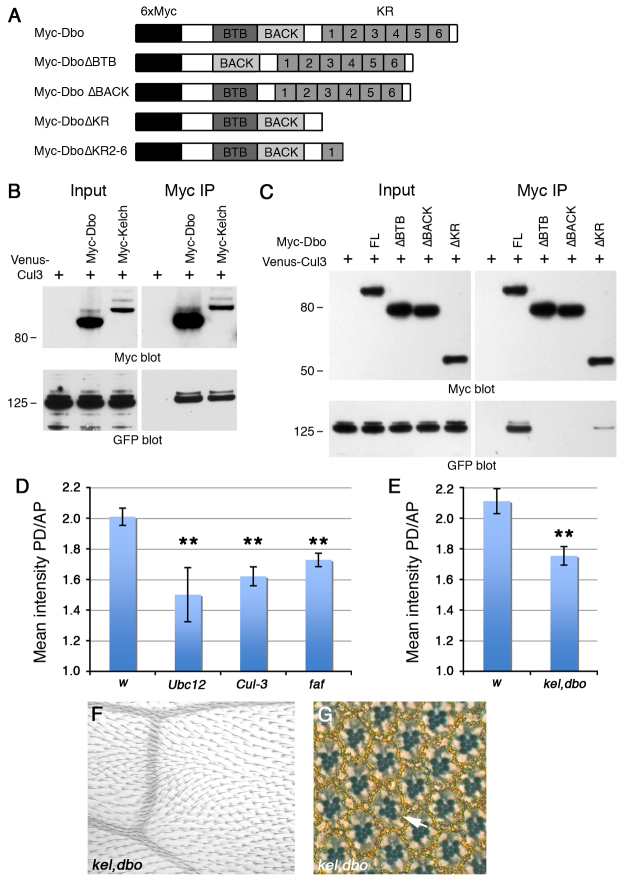Fig. 3.
Ubiquitylation regulates core protein asymmetry. (A) Myc-Dbo, showing the position of the BTB and BACK domains and the Kelch repeats (KR). Beneath are the deletion constructs used in the pulldown experiments. (B,C) Western blots showing pulldown of Venus-Cul-3 by Myc-tagged Dbo and Kelch (B) and the full-length (FL) and deleted forms of Myc-Dbo (C). Loading of input is 10% of pulldown. Molecular mass (kDa) is shown to the left. Anti-GFP recognises Venus-Cul-3. DboΔBTB and DboΔBTB no longer bind to Cul-3, whereas DboΔKR still binds but only weakly, suggesting that deletion of the Kelch repeats might perturb the secondary structure of the BTB/BACK domains. (D,E) Mean intensity of Fmi staining on proximodistal (PD) junctions (>45° from horizontal) relative to anterior-posterior (AP) junctions (<45° from horizontal) in wings expressing wIR-30033, Ubc12IR-7375R-3, Cul-3IR-109415 and fafIR-2956 using MS1096-GAL4 (D) or in wings from w1118 and kelDE1; dboΔ25.1 double-mutant flies (E). Asymmetry was scored below vein 4 (see supplementary material Fig. S3A-G). As MS1096-GAL4 is more strongly expressed dorsally, asymmetry in these wings was scored on the dorsal surface only. Error bars indicate s.e.m.; **P<0.01. (F,G) kelDE1; dboΔ25.1 double-mutant wing (F) and adult eye section (G). Trichome swirls are only seen below vein 4, and ∼1% of ommatidia are mispolarised. Arrow points to a mispolarised ommatidium.

